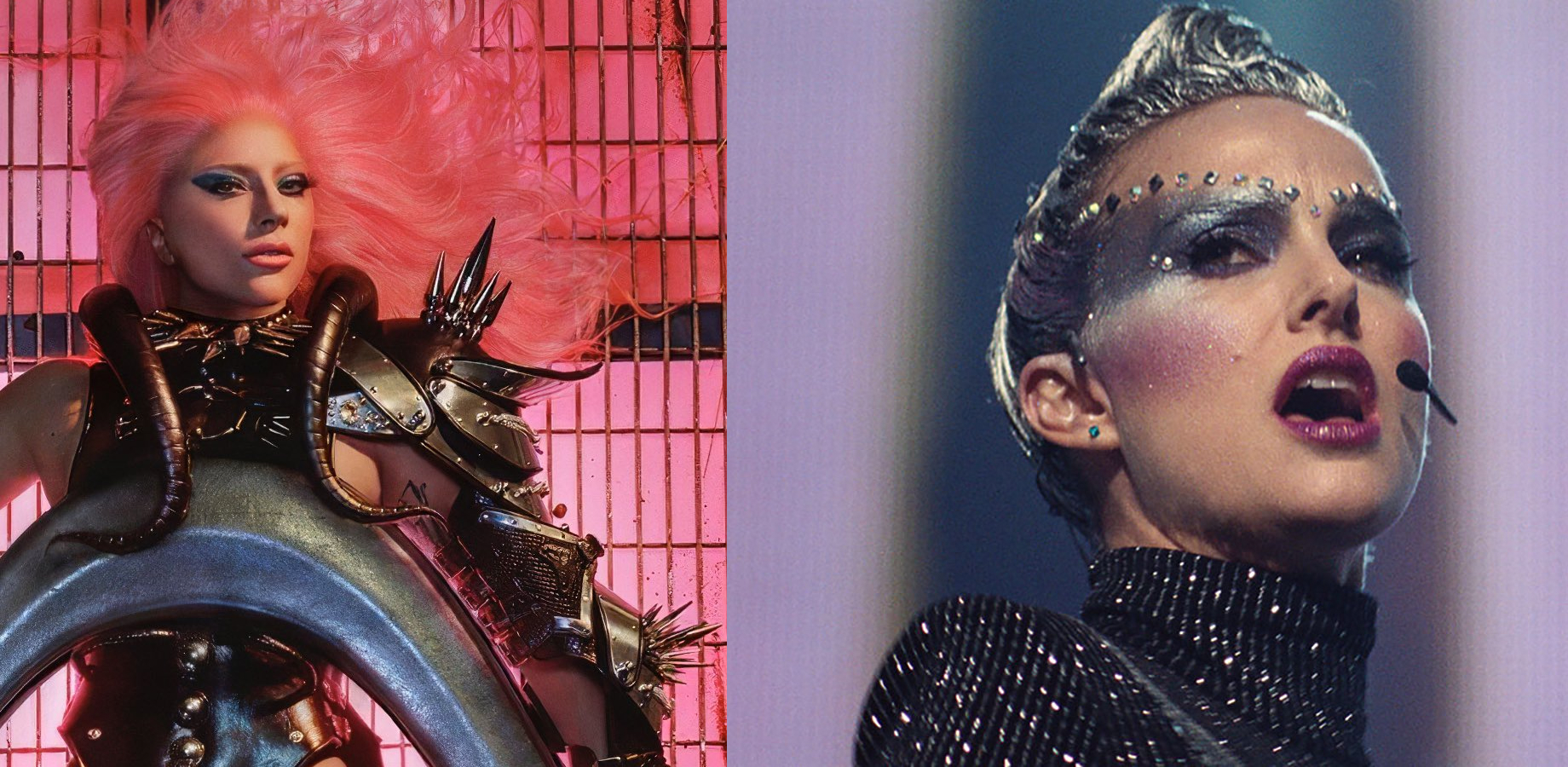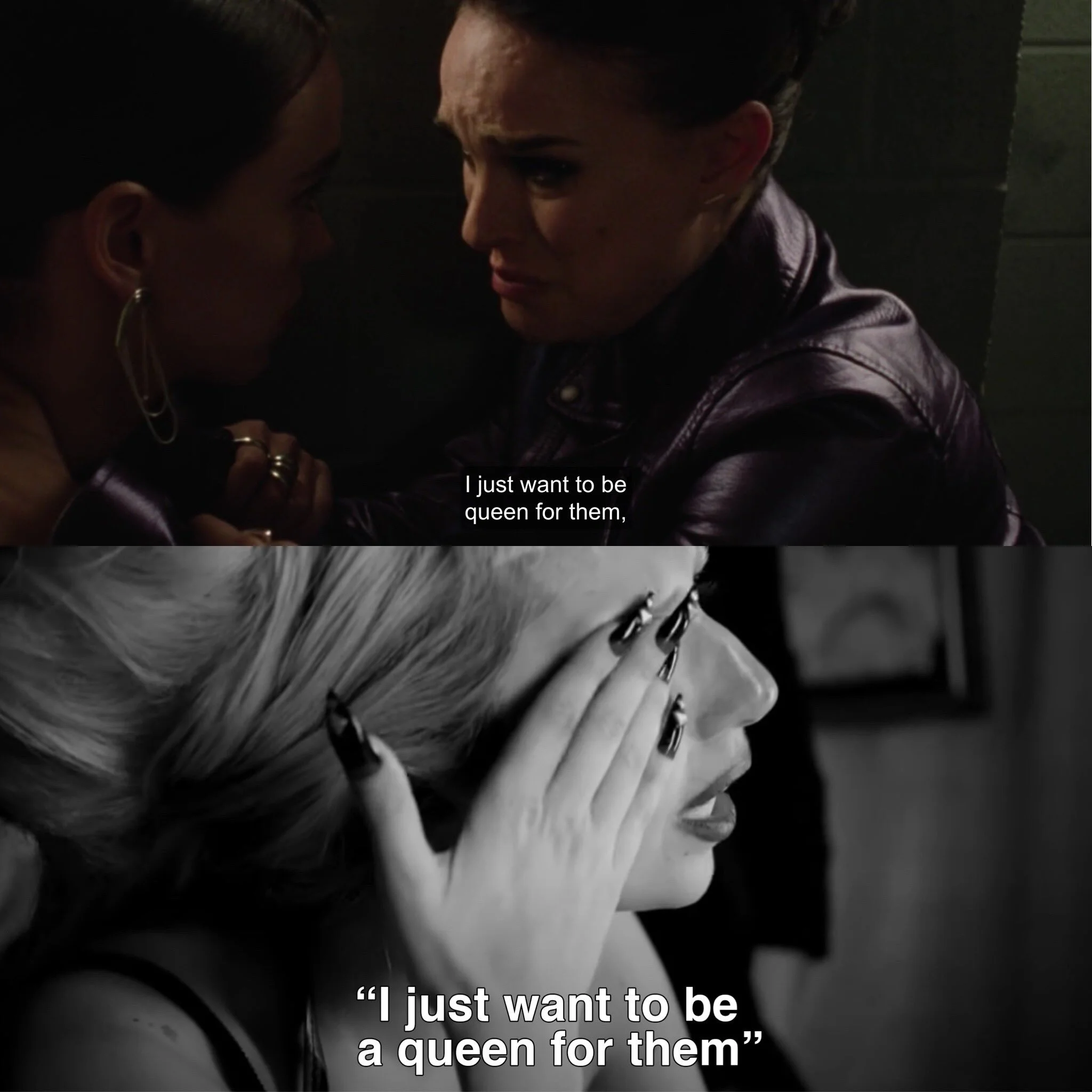Revisiting Vox Lux through the lens of Chromatica
“It’s about rebirth.”
“Could you pull me out of this alive?”
So begins “Alice,” the first full song from Lady Gaga’s sixth studio album Chromatica. It’s a line that foreshadows almost all the rest of the album’s content: brazen electronic anthems about trauma, recovery, and the journey to healing. “Alice” brings the listener into the world of Chromatica, the proto-fictional universe Gaga’s mind lives in, one that, she says, “is how [she] makes sense of things.” In an interview with Zane Lowe for Apple Music in May 2020, Gaga said about “Alice,”
“I think that the beginning of the, uh, the album really symbolizes for me, what I would call to be the beginning of my journey to healing, and what I would hope would be an inspiration for people that are... in need of, uh, healing, you know, through happiness.”
Chromatica is Lady Gaga’s first album since the release of Vox Lux, the 2018 film about the life of fictional pop star Celeste, played by Natalie Portman and inspired by a collection of different pop icons, but most obviously, Gaga. Not only does the film specifically mention that Celeste was born in 1986, like Gaga, but both stars are candid about their issues with mental health, substance abuse, and chronic body pain — all resulting from intense trauma and PTSD.
When I first saw Vox Lux, I wasn’t thoroughly convinced. As someone who considers themself to be a scholar of pop stars, I initially found it to be a cold, pretentious look at pop superstardom made by a director who was intent on sending up what he believed to be a shallow world marked by its simplicity and driven by the mindless ineptitude of its core base — two things that people who don’t consider pop to be “real art” often think are true. But the more I sat with the film, the more I couldn’t stop thinking about it. Was Celeste a caricature, or was she an amalgamation of so many different pieces of pop, all warring with each other so often, that she was the perfect portrait of a fictional icon?
Natalie Portman and Raffey Cassidy in Vox Lux (2018)
Last September, while viewing it for the third time, I finally got my answer. This time around, I was stricken by how keenly writer and director Brady Corbet managed to depict Celeste’s journey, to the point where it almost seemed to predict the current state of the character’s main inspiration, Lady Gaga. The connection between Gaga and Celeste is found most prominently in a scene where Celeste subjects herself to questions from an intimate roundtable of the press while promoting her new album. When asked about what to expect from the record — her sixth, which shares the title of the film — Celeste describes it as “sci-fi anthems, the concept…was to make it as relentless and addictive as possible.” Immediately afterward, she’s pressed by a reporter about a very public traffic accident, which occurred when Celeste mangled a pedestrian’s left leg and pelvis while under the influence of pain medication, which she takes for the traumatic injury she sustained in the tragedy that launched her own stardom.
At that moment, one I had already seen play out twice before, I was stunned by the eerily prescient connection to current-day Lady Gaga. Chromatica and Vox Lux are both the long-awaited sixth studio albums from pop monoliths; both records filled with anthemic songs with such shiny production that they almost feel like science-fiction, especially when placed in the context of the saturated technicolor planet in the “Stupid Love” video or the Blade Runner-esque visual futurism of the “Rain On Me” setting. What’s more, is that both Gaga and Celeste are candid with their use of prescription medication to cope with their trauma — Celeste’s is physical, Gaga’s is mental. Celeste is prescribed pain medication for a gunshot wound that left a bullet lodged in her spine forever while Gaga openly takes an antipsychotic after experiencing a psychotic break sometime during her career (not an opioid, as she carefully noted in her interview with Zane Lowe, though she does also experience chronic pain as a result of her PTSD-induced fibromyalgia.)
Later in the film, before the opening show of her comeback tour, a strung-out Celeste is helped inside the arena by her manager and older sister. As her team shoos away photographers, reporters, and event staff all trying to get a piece of Celeste while they make their way backstage, a quiet discussion begins of what to do about the audience of thousands waiting for her. Celeste, belligerent and slurring, starts to scream. “I am tired of everybody treating me like I’m not a person! I’m not just a thing you can put on and wear!”
This kind of free-for-all objectification of the pop star was discussed by Gaga in an interview with CBS Sunday Morning’s Lee Cowan back in September while promoting Chromatica. Speaking about her experience with chronic body pain, which she suffers from as the result of PTSD from being sexually assaulted at 19, she told Cowan,
“Most times it is triggered by objectification. If I’m at the grocery store and somebody comes up very close to me and puts a cellphone right in my face and just starts taking pictures. Just total panic, full-body pain. I’m braced because I’m so afraid. It’s like I’m an object — I’m not, I’m not a person.”
What’s so incredibly interesting about these parallels between fiction and reality is that they seem almost predestined, manifested by Brady Corbet’s inclination to base Celeste off of Gaga so clearly. In the very next moments following Celeste’s outburst, she crumples to the floor in sobs in a dressing room backstage. While being held in her sister’s arms, she tells her, “I just want to be a queen for them, and sometimes I don’t feel like a queen at all.” It’s a direct quote from Lady Gaga’s 2011 HBO Special, The Monster Ball Tour at Madison Square Garden, wedged into Corbet’s screenplay as a line that could play almost as a joke to the uninitiated but would be instantly clocked by any Gaga fan. In the concert special, backstage and bathed in bright dressing room lights before the first of two major sold-out shows, Gaga looks in the mirror while starting to remove her makeup and quickly begins to cry. Dabbing her face with a tissue, she tells her hairstylist, “I just want to be a queen for them…and sometimes I don’t feel like one.”
While the inclusion of this reference was undoubtedly deliberate, it manages to create an even more fascinating view of the film, and specifically Corbet’s direction and Portman’s performance, when viewed in retrospect following the release of Chromatica. Initially, I wasn’t sure what to make of Vox Lux’s idea of the pop superstar. Portraying the life of a pop artist as entirely public and rocked by substances and trauma is hardly a new phenomenon. In fact, the third remake of A Star is Born was doing the same thing, at the same moment in time, in the next theater over. And at times, it seemed like Vox Lux struggled with striking any kind of consistent tone. At one moment, Portman’s Celeste is dramatically hounded by paparazzi and in the very next, she’s telling her daughter she woke up looking like a pterodactyl, almost veering on parody. The mood is consistently shifting, demanding awkward laughter from audiences who can’t seem to follow where it’s going. It’s wholly enigmatic, kind of like the pop star it’s so clearly inspired by who had a residency called Enigma and a song by the same name on Chromatica.
It wasn’t until after the release of Chromatica that the pieces of Vox Lux that never quite clicked for me before all started to fit together. Corbet’s screenplay is, somehow, so smart it’s predictive. Not just specifically of Gaga, but of a woman pop star, plagued by both mental health issues and inescapable media scrutiny, and how that would affect her life and influence her art six records into her career. Vox Lux is the yin to Chromatica’s yang, a darker but similarly interconnected side of what pop and the media machine can do to women artists. Those opening lines of “Alice” find Gaga, stuck at her lowest point and weighed down by her life’s trauma, asking herself and anyone who will listen if they can pull her out alive. The big centerpiece song of Vox Lux’s final concert scene, “Wrapped Up,” propelled a young Celeste to stardom with a similar plea: “So teach me, show me all you've got. And in your words, I will be wrapped up. Speak to me, you're my last hope. And I will say nothing and listen to your love.” Gaga, surrounded by support and a fiery will to live, ultimately finds a soundscape of love through Chromatica which heals her. Celeste, however, is trapped in the machine, unable to break free from her trauma that the world has co-opted and commodified, forcing her through it for the rest of her life.
The first time Celeste sings “Wrapped Up” at a candlelight vigil, her fate is sealed. “The entire country fell in step with her sentiment,” the narrator tells us. “It was not her grief; it was theirs. No longer her experience, they reclaimed it as their own.” Vox Lux, which was released with the tagline “A Twenty-First Century Portrait,” is the gruesome tale of the secondary trauma formed when the public lifts an artist’s grief and deems it their own — and the endless horrors that creates. While Chromatica ultimately is a roadmap through the darkness of trauma and a celebration on the other side, Vox Lux is the cautionary tale of a star who makes the wrong turn into a world so dark she becomes lost forever.
[This article was originally published at Top Shelf, Low Brow.]



